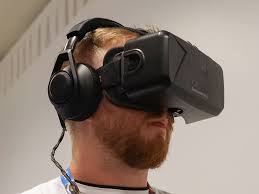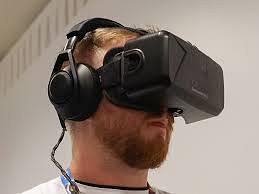5 Ways Oculus Rift Can Be Used in Healthcare
The makers of the Oculus Rift promise that their virtual reality device gives you an immersive experience unlike anything you’ve seen before. The Oculus Rift is intended to enhance your enjoyment in areas such as gaming, movies, social networking, and application use. Although gamers may be the first logical target market for the Oculus Rift, the new system can also be a useful tool for the development of healthcare apps.
Phobia Treatment
One of the most apparent uses for Oculus Rift in mHealth products is the creation of virtual reality landscapes to treat mental health disorders. In particular, medical apps developers are looking at designing virtual realities that target phobias such as a fear of snakes, heights, spiders, and flying. By using a virtual reality device, doctors can tailor the level of the exposure to the patient and also offer an easy out in case the situation becomes too unbearable.
Specialist Medical apps developers have already begun releasing products aimed at treating patients’ fears within the safe haven of virtual reality. For instance, psychologist Fernando Tarnogol recently released Anxiety Management Virtual Reality Platform as a way to expose patients to the stressors that are causing them to feel irrational bouts of fear.
Post-Traumatic Stress Disorder
Exposure therapy is commonly used to treat soldiers who are suffering from post-traumatic stress disorder after returning home from war. Oculus Rift can recreate the situations where the trauma occurred for the solider. Under the care of a clinician and with extended exposure, the anxiety is intended to lessen. One such mHealth program, Virtual Iraq, has been adapted by military health centers and allows users to recreate situations such as Humvee explosions and insurgent attacks.
Physical Therapy
Research is now being conducted on the effectiveness of Oculus Rift on patients who have lost limbs. These patients often suffer from what is known as phantom limb syndrome. The patient may feel pain or itching in the missing limb. Amputees can also become easily frustrated during the process of using prosthetics. Healthcare apps for Oculus Rift can recreate a virtual limb for the patient in order to help them over the hurdles of adapting to their condition.
Medical Research
The Oculus Rift can be an invaluable tool to medical researchers and doctors who want to create a customizable treatment plan to patients. For instance, Felipe Medeiros, a professor at the University of California San Diego, conducted a study on glaucoma patients to evaluate their body’s responses when exposed to certain environments like walking through a tunnel. The results showed researchers when a fall was most likely to occur for the patients. The researchers were in turn able to use this data to advise patients on the best ways to avoid spills.
Healthcare Training
Medical simulation training scenarios can be offered on the Oculus Rift to improve the level of training of military personnel. Plextek Consultancy is a firm hired by the United Kingdom’s Defence Science and Technology Laboratory to create virtual battlefield situations in order to access medical needs while in high stress settings.
Healthcare apps can extend beyond the battlefield and also offer training to medical professionals in traditional hospital settings. As an example, Arch Virtual is a company that can create detailed equipment models in collaborative environments for their medical clients.
The mHealth field is bound to find more uses of Oculus Rift as the device is offered publicly and finds its way into the offices of more medical professionals. Although virtual reality isn’t a new tool for physicians, Oculus Rift promises a level of affordability never previously offered.
Comments
There are 0 comments on this post













